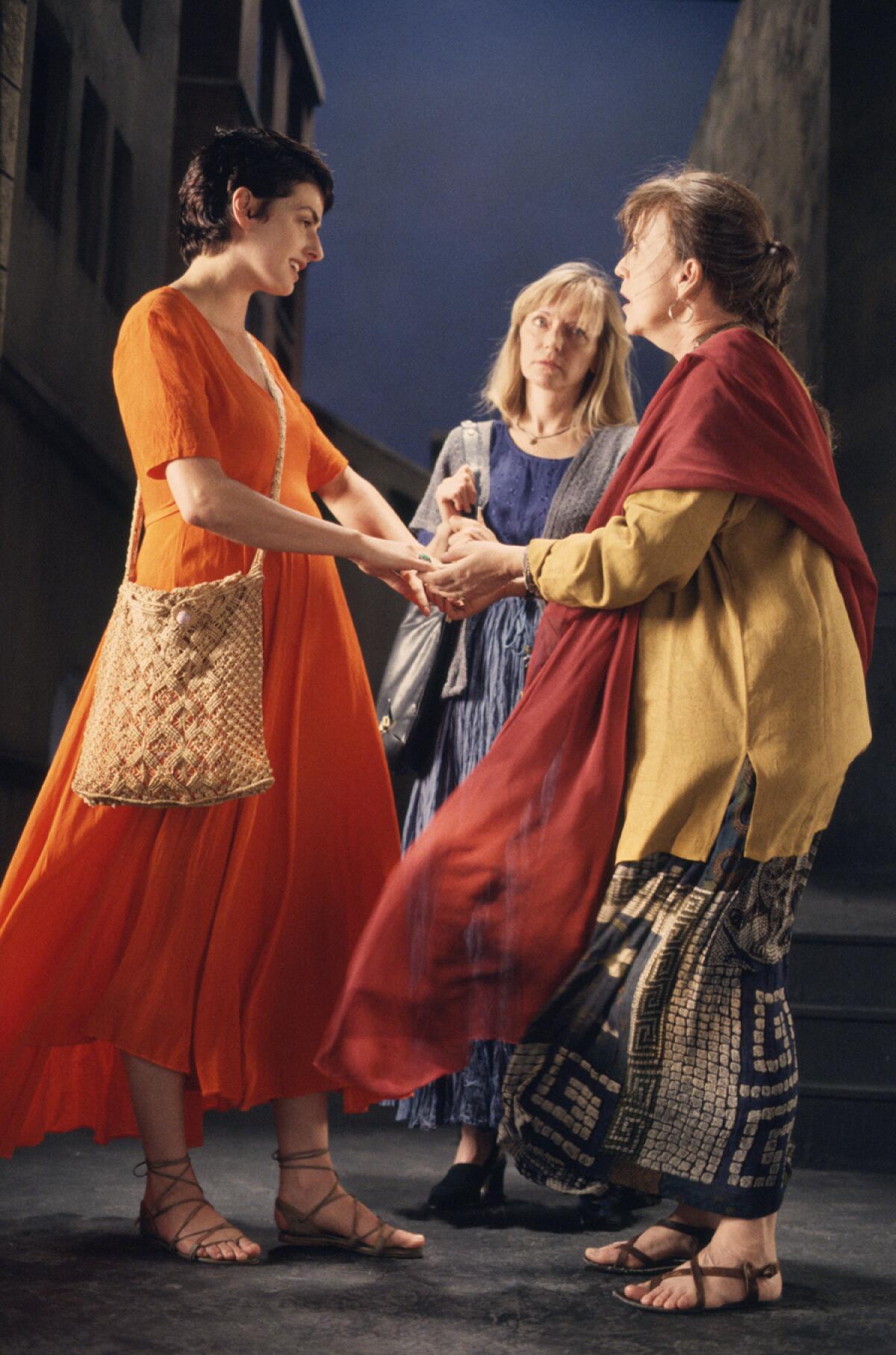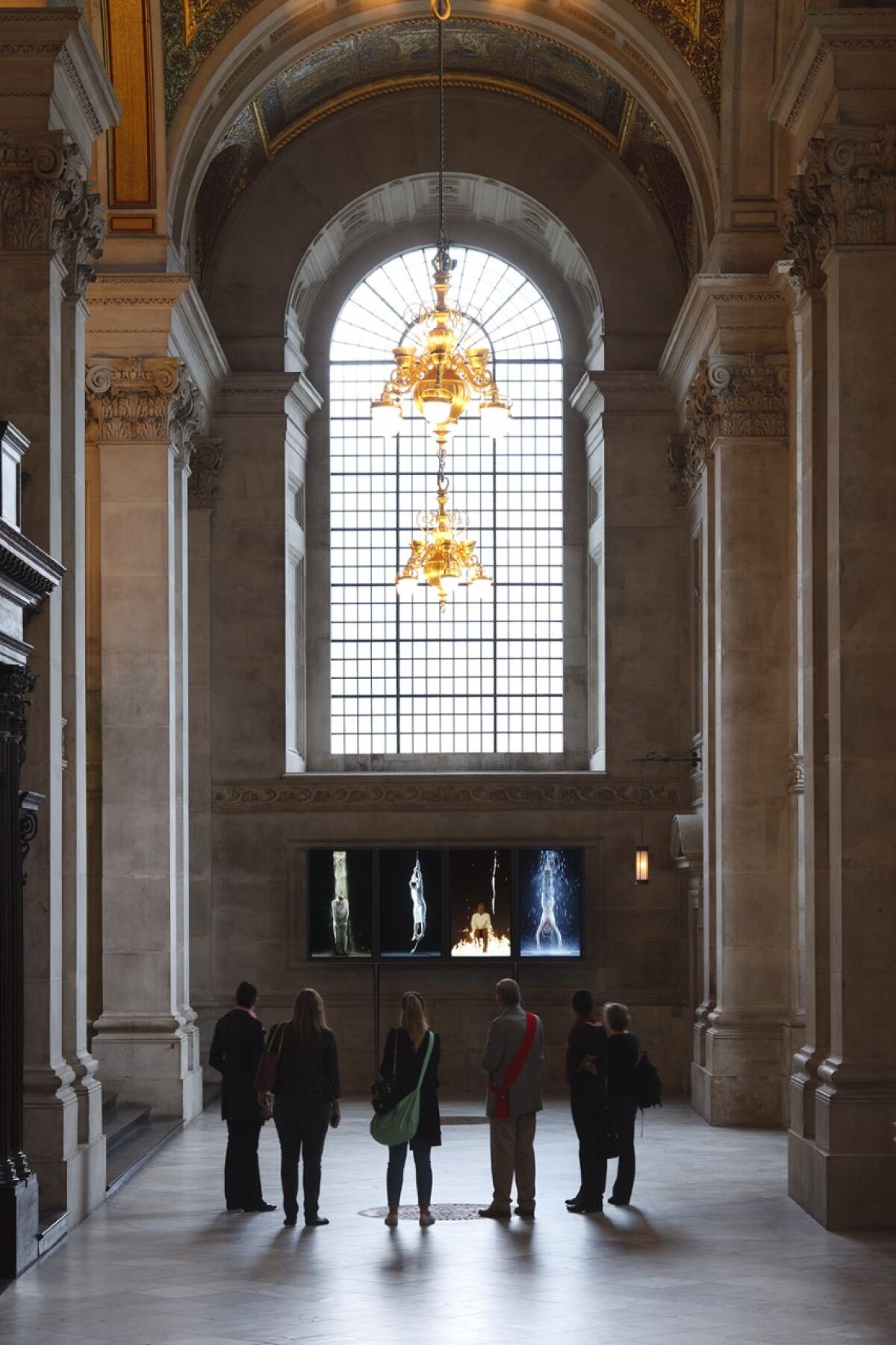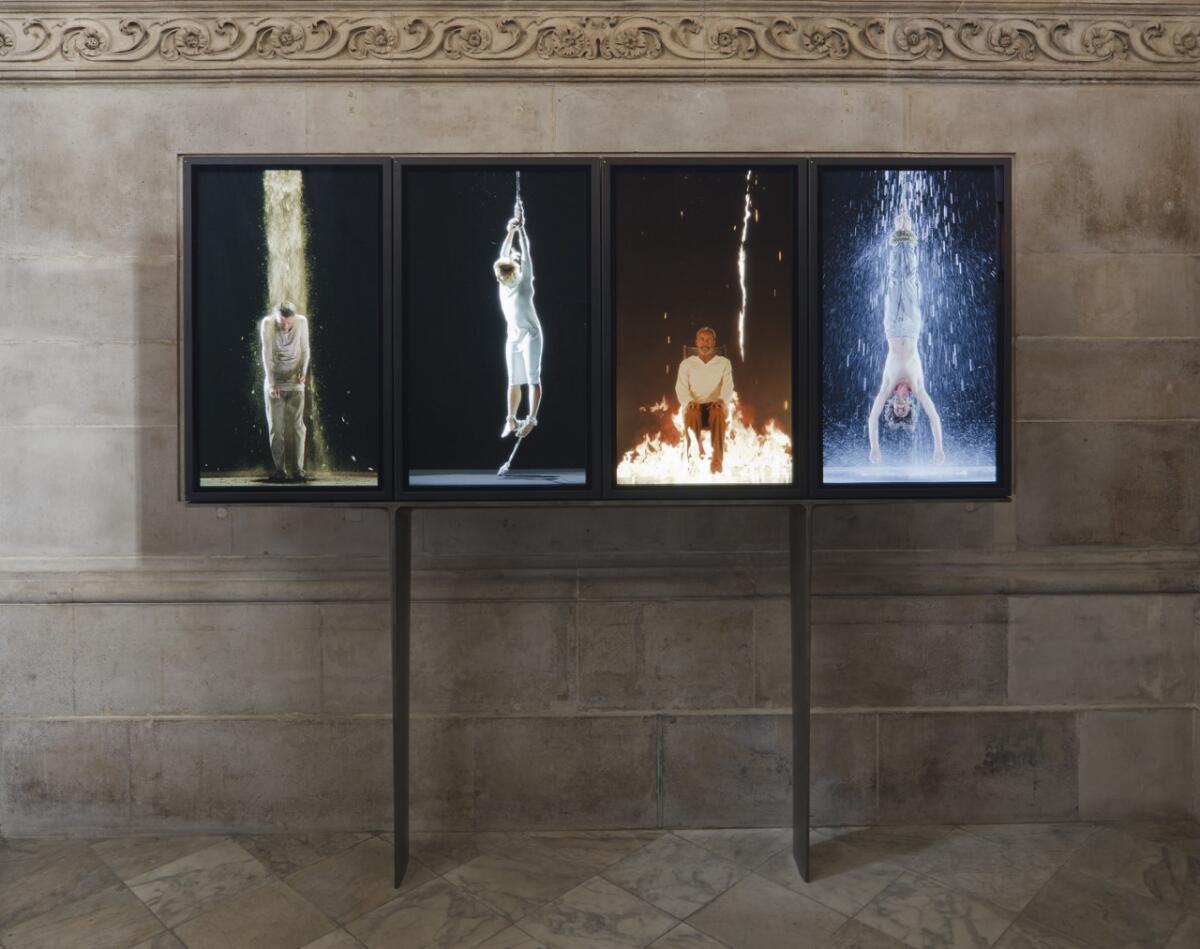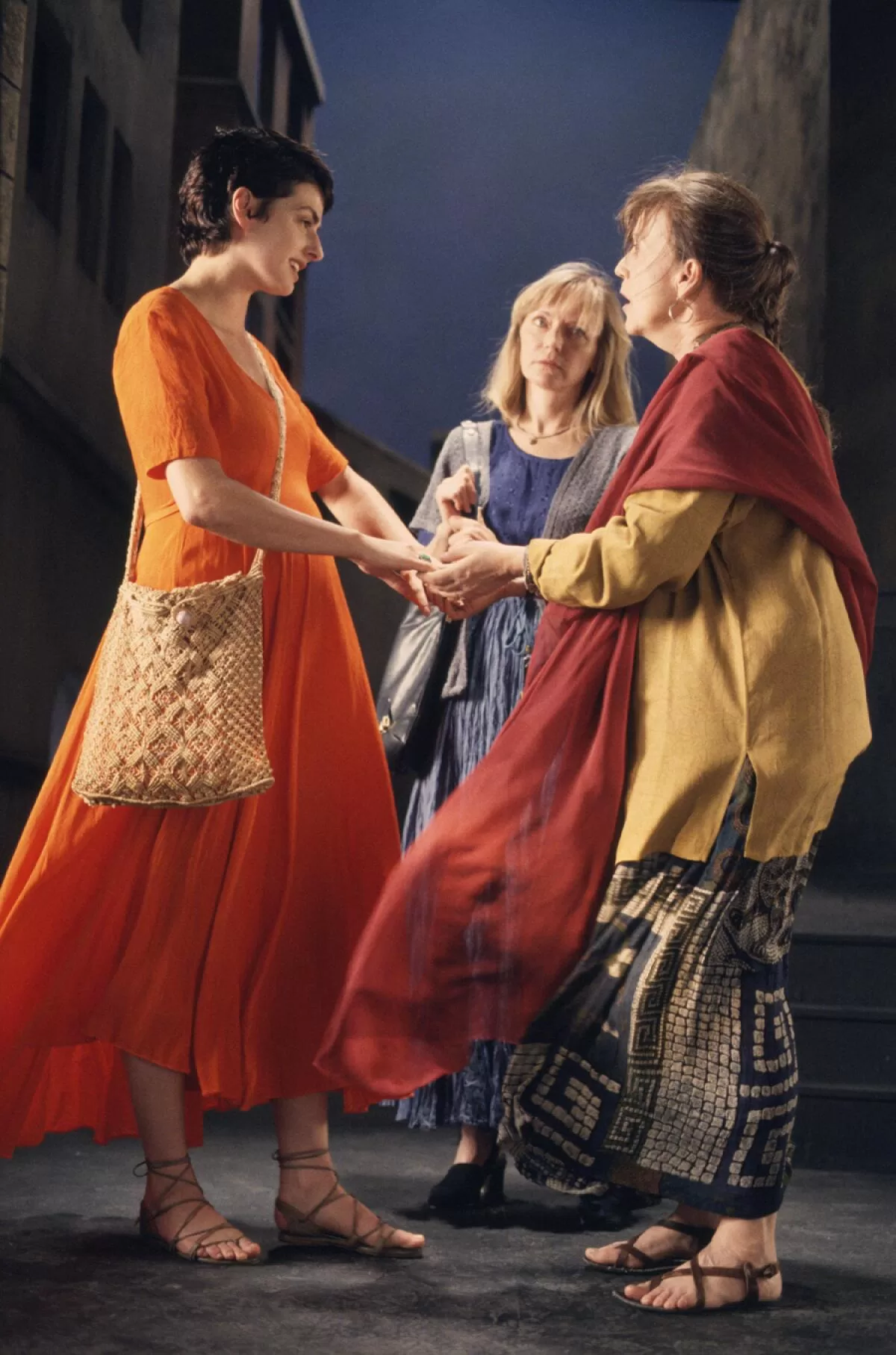Artist Bill Viola, whose pioneering work with video since the 1970s opened the door to what would become a major artform internationally, died Friday at his home in Long Beach after a long struggle with early-onset Alzheimer’s disease, according to his wife and artistic partner, Kira Perov. He was 73.
Diagnosed in 2012, he had entered hospice care in October 2020. Viola curtailed his ambitious international practice the year before.
Using video technology, the artist had gone in search of the nature of human consciousness — of what it is, how it operates, what it can endure or truly know. For the next four decades his art would be an extended exploration of the ancient conundrum.
In 1985, Viola’s “The Theater of Memory” became the first installation with a major video element to be included along with traditional painting and sculpture in New York’s Whitney Biennial, then the premier survey of new developments in American art.
“A large tree leans diagonally across the room, its exposed roots at the floor near the entrance and its bare branches stretching to the ceiling,” the artist wrote on a proposal sketch for the commissioned piece. “Fifty small electric lanterns are hung on its branches. Up on the rear wall is a large video-projected image.”
The projected video is a dreamlike cloud of gray visual static — the vertical rolls, snow and other interference normally banished from a television screen in the living room. Momentary pictures emerge from the crackling cloud and then sink back — a girl walking, a simple clapboard building, a hand holding a teacup, a car careening over a steep embankment and more. No logical narrative materializes.
The installation, which the artist described as “a psychic landscape” meant to evoke the processes of memory, was acquired in 1988 by the Newport Harbor Art Museum (now the Orange County Museum of Art). A year before, the newly opened Museum of Contemporary Art in Los Angeles had acquired Viola’s slightly earlier “Room for St. John of the Cross,” a noisy evocation of spiritual disruptions in modern life as prophesied by a 16th Century Spanish mystic.
The work incorporates as primary components both a mural-size video projection on the wall and a miniature color TV monitor sequestered inside a tiny, monastic, cell-like shack. That fall, the installation was a centerpiece in a selection of Viola’s installations and single-channel videotapes that became the first major exhibition at New York’s Museum of Modern Art to feature an artist who worked primarily with the mediums of video and sound.
This heady rush of “firsts” for American video art peaked in 1989 when Viola was awarded a MacArthur Fellowship. Only four subsequent artists working extensively with video have been chosen for the program, nicknamed the “genius grant,” in its 40-year history. In fewer than five years, Viola, then 38, had become the artist perhaps most instrumental for bringing video installation art into the mainstream of American cultural life, where today it is commonplace and occupies a central position.
Viola was born in Queens, N.Y., on Jan. 25, 1951, making him a card-carrying member of the first generation in global history to grow up bathed in the queer blue light of TV. When he was 18, his choice of Syracuse University as an art school destination proved fateful. Video art was taking off following the late-1960s invention of portable — and affordable — television recording equipment for personal use. Viola had enrolled at the school in Upstate New York to study painting, but the region was becoming a center for experimentation with the new video medium.
At the Experimental Television Center in nearby Binghamton, video pioneers Nam June Paik and Shuya Abe built a sophisticated electronic synthesizer, capable of layering, multiplying or dividing a mixture of live and recorded digital imagery into complex moving collages. Critic Bruce Kurtz, teaching in Oneonta, began writing about the new television artform for Arts Magazine, launched with the influential essay “Video Is Being Invented.”
At Syracuse’s Everson Museum of Art, director James Harithas, a supporter of all things artistically novel, hired David Ross as the museum world’s first curator of video art. Viola snagged a part-time job there as a technician and exhibition preparator, and he would have his first exhibition at the Everson in 1973. At school, he overlapped with Paul Schimmel, a young student studying museum studies and art history who would later become chief curator at Newport and MOCA.
Viola also performed in avant-garde composer David Tudor’s germinal musical production “Rainforest.” Presented at the Everson, the sound installation was constructed from such everyday objects as a metal barrel, a glass jar and plastic tubing, all suspended in space to amplify their resonance. Viola’s creative relationship with Tudor would continue until the composer’s death in 1996.
Important as well to shaping Viola’s emerging aesthetic was sculptor Jack Nelson, a Syracuse professor who became the young artist’s mentor. Nelson’s assemblages originated from an introspective spirituality, which he personified in a celestial character named Mr. Moon.

Bill Viola, “The Greeting,” 1995, video/sound installation
(Kira Perov)
Viola soon took a related direction in his video art, exploring mystical and transcendent subject matter not being widely investigated in other contemporary American art. As his work deepened and matured in the 1990s, emphasizing spiritual and metaphysical inquiries, it would often find more welcoming audiences in Europe and Asia than in the United States.
Following graduation from Syracuse with a bachelor of fine arts in experimental studio art, he took a post at a video workshop in Florence, Italy, for 18 months, becoming immersed in Renaissance painting and sculpture. He traveled extensively throughout the Pacific region, including Indonesia, the Solomon Islands, Northern India and Japan, where he lived and worked in 1980 and 1981. An artist-in-residence at Sony Corporation’s research laboratory outside Tokyo, Viola developed a major interest in Buddhist principles of mindfulness.
One Pacific journey brought him to Melbourne, Australia, at the invitation of Perov, then-director of cultural activities at La Trobe University. A relationship blossomed, and Perov began a lifelong collaboration with Viola on complex video and installation works.
The couple married in 1980. They settled in Long Beach, where Ross, nicknamed “Captain Video” among artists, had recently relocated from Syracuse to the Long Beach Museum of Art to launch an exhibition program and, later, establish a post-production video lab. Viola, in addition to utilizing those facilities, became artist-in-residence at Memorial Medical Center in the city, where he was able to explore new imaging technologies aimed at the study of the human body.
Mind and body connections were soon an established theme in Viola’s work. What made his art distinctive was its use of video technologies for a range of metaphors that once derived from nature. Traditional landscape was transformed into the revolutionary environment of digital imagery, where global society now lives.
Viola’s apocalyptic “Theater of Memory” installation was a watershed example. The dead tree, flamboyantly uprooted, is an overturned ruin from the natural landscape — the “blasted tree” frequently employed in 18th and 19th century European and American landscape painting to signify a disappearing concept of wilderness in the face of encroaching industrialization. Around Viola’s felled tree, lamplights of historical knowledge flicker like electrified fireflies. An artificial breeze gently wafts from an oscillating fan positioned nearby, while a gathering storm of thoughts erupts from the high technology of projected video light, crackling and popping in a primordial stew.
As with Plotinus, the Hellenistic founder of Neoplatonic philosophy, Viola’s installation proposes memory as a perceptual function that allows a human soul to acknowledge its own existence. Plotinus drew on obscure ancient Egyptian metaphysics, Viola on the esoteric technology of modern life.

Installation view, Bill Viola, “Martyrs (Earth, Air, Fire, Water),” 2014, South Quire Aisle, St Paul’s Cathedral, London
(Peter Mallet / Bill Viola Studio)
In 1995, Viola represented the United States at the centennial of the Venice Biennale, the major international art festival in Italy. His exhibition included a hyper-slow-motion video, “The Greeting,” inspired by Mannerist painter Jacopo da Pontormo’s masterpiece “The Visitation” (1528-29), which richly intensifies a convivial interaction among three women. Dressed in flowing, brightly colored garments, two women warmly approach one another on the street as a third observes.

Bill Viola, “Martyrs (Earth, Air, Fire, Water),” 2014, high-definition video polyptych on four plasma displays
(Peter Mallet)
Employing a stationary, high-speed 35-mm camera shooting 300 stills per second, Viola recorded the scene in one take. The event lasted just 45 seconds, but the video projection unfolds over the course of 10 minutes.
The video’s extreme slow-motion creates anticipation in a viewer, while the pictorial movement yields a desire to leisurely examine the image in a manner more akin to looking at paintings than at traditional camerawork. In 2003, Viola further explored human passions and emotional drives introduced in “The Greeting” in an exhibition at the J. Paul Getty Museum. Flatscreen videos employed imagery related to medieval, Renaissance and Baroque devotional paintings.
Fifteen large-scale video works made over 20 years were the subject of a 1997 Viola survey at the Los Angeles County Museum of Art. In a virtually unprecedented decision, the artist installed the show without a single identifying label or wall text, as museums typically require. Viola’s gesture gave priority to a viewer’s unvarnished art experience. Only at the end of the exhibition, when a visitor was leaving the museum, was an informative brochure available for further consideration.
Viola also produced work meant to be seen entirely outside the usual art context of a museum or gallery. London’s St. Paul’s Cathedral installed a commission, “Martyrs (Earth, Air, Fire and Water),” in a choir in 2014, joined two years later by the triptych “Mary.” The project is the first known example of video rather than painting or sculpture produced for permanent display as contemplative art inside a major church.
“Martyrs” features four vertical plasma screens showing silent suffering and martyrdom through the title’s four elemental forces. The second work is a triptych featuring an episodic narrative inspired by the life of the Virgin Mary but represented in cross-cultural terms of Western and Eastern religious and secular imagery. Among them is a Buddha-like woman breast-feeding an infant in the manner of a Christian Madonna and Child and posed before the Los Angeles skyline, where East and West meet. The pair of works were gifted to Tate Modern and placed on long-term loan to St. Paul’s.
“There are no answers to life or death,” Viola once explained of his aspirations for his art. “I think mystery is the most important aspect of my work. That moment when we open a door and close it without knowing where we’re going.”
In addition to Kirov, Viola is survived by sons Andrei and Blake. A memorial is being planned in his honor.
